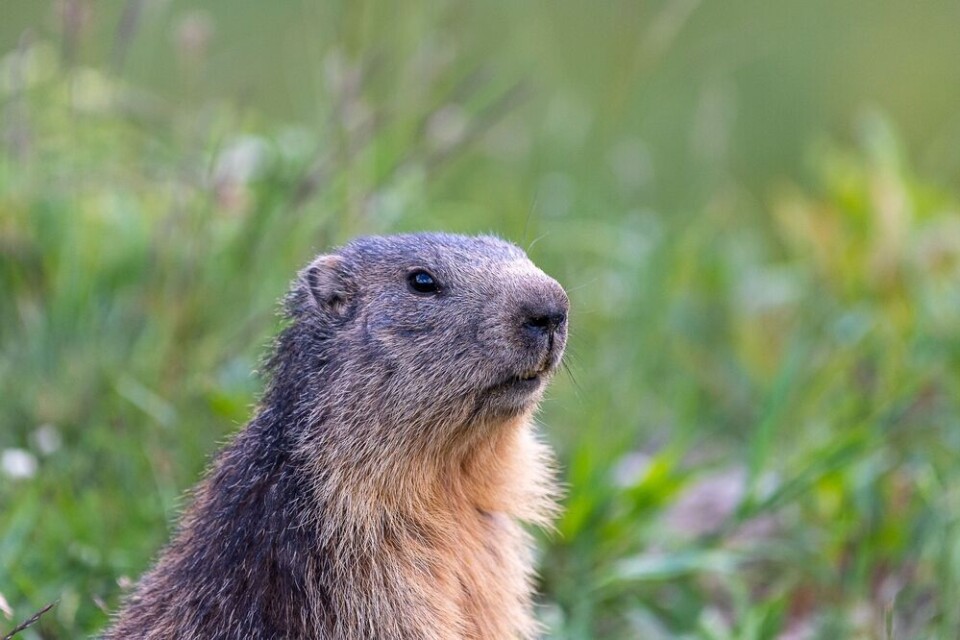-
Investigation launched after hunter fires at wild boar just feet from a busy road in central France
A 76-year-old man was taken into custody after the incident
-
The origins and long history of France’s unique wildlife officers
Connexion talks to Julien Nicolas, who fulfils a role created by Charlemagne in the year 803, tackling wildlife posing a danger to the public
-
France leads efforts to save critically endangered European mink from extinction
A reintroduction plan is in place to save the species, which is more threatened than the Giant Panda
Associations seek end to marmot hunting in France
Six environmental groups have taken the issue to court, saying that the marmot is ‘no longer used for eating, for its fat, or its fur’. A decision is expected imminently

Six environmental associations have taken the issue of marmot hunting in France to court, to seek a permanent extension to a ban signed by the Savoie prefect in September.
A decision is expected imminently, having been initially planned for the end of today (Friday, October 20).
The associations bringing the case are l’Association Justice Animaux Savoie, ASPAS, Animal Cross, AVES, FNE Savoie and One Voice. They have denounced the hunting as “scandalous”, as the species is “protected and threatened by climate change”.
Read more:Marmots at risk from rising temperatures in France
Marmot hunting is banned in Cantal and the Pyrénées-Orientales, but not in Savoie or the Pyrénées-Atlantiques.
Pauline Di Nicolantonio, president of Justice Animaux Savoie, denounced the practice. She said: “Today, marmots are no longer used for food, fat or fur.
“It is a form of hunting which is banned on the other side of the Alps, in Italy. So on the one hand, this hunt is banned, and on the other, nearly 1,000 marmots are hunted [in France] every year.”
The association gathered more than 80,000 signatures for its recent petition against the practice.
Marmots are protected under the Bern Convention, which requires populations to be in ‘good condition’. However, this is not the same as being classified as a ‘protected species’.
A junior minister at the Ministry for the Ecological Transition told 20 Minutes: “Scientifically, there is no basis on which to ban marmot hunting. This species is not threatened.”
However, Marc Peronnard of France Nature Environnement said that there is currently no clear picture of the situation - nor the exact number of marmots in the Alps - due to a lack of population counts.
“We want to know exactly what is happening to the populations,” he said. “We do not want to shoot blindly at populations until we know the dynamics of reproduction.”
The animal welfare associations believe that marmots are in decline and are threatened by climate change and increased lack of snow in winter, but hunting associations say that their numbers are increasing.
Marmots are traditional symbols of the mountains and were typically hunted to be used for their fur or meat.
Nowadays they are hunted for sport.
President of the Savoie Hunting Federation, Régis Clapier, said that hunting was a traditional and cultural institution.
He told FranceInfo: “It is a great hunt because it is an animal which outwits man. You have to get close to it, you have to attract it. And then, when you kill a marmot, you share it with your friends at the back of the chalet, which is marvellous.”
Most people think more fondly of the live animal, however, surveys suggest. An IFOP poll in 2022 found that 69% of people in France oppose marmot hunting.
Much-loved - and internationally popular - animated marmots acted as mascots on France 3 for more than five years, and they ended their TV tenure with a ‘goodbye’ that was a parody on the famous televised departure speech of then-President Valéry Giscard d’Estaing in May 1981.
Related articles
France 3's TV mascot marmots say goodbye like a president
Raising awareness of tourism dangers for cuddly French Alpine marmots
France’s marmots are back as they emerge from a winter of hibernating
























